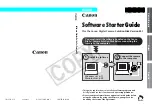
249
Copyright © Acronis, Inc., 2000-2010
12.
Unmount the mounted file systems and then reboot:
umount /mnt/system/dev/
umount /mnt/system/proc/
umount /mnt/system/boot/
umount /mnt/system/
reboot
13.
Reconfigure the bootloader by using tools and documentation from the Linux distribution that
you use. For example, in Debian and Ubuntu, you may need to edit some commented lines in the
/boot/grub/menu.lst file and then run the update-grub script; otherwise, the changes might not
take effect.
6.3.11.2
About Windows loaders
Windows NT/2000/XP/2003
A part of the loader resides in the partition boot sector, the rest is in the files ntldr, boot.ini,
ntdetect.com, ntbootdd.sys. boot.ini is a text file that contains the loader configuration. Example:
[boot loader]
timeout=30
default=multi(0)disk(0)rdisk(0)partition(1)\WINDOWS
[operating systems]
multi(0)disk(0)rdisk(0)partition(1)\WINDOWS="Microsoft Windows XP Professional"
/noexecute=optin /fastdetect
Windows Vista/2008
A part of the loader resides in the partition boot sector, the rest is in the files bootmgr, boot\bcd. At
starting Windows, boot\bcd is mounted to the registry key HKLM \BCD00000000.
6.3.12
Assembling MD devices for recovery (Linux)
In Linux, when performing recovery from a disk backup to an existing MD device (also called Linux
Software RAID), make sure that this device is assembled at the time of recovery.
If the device is not assembled, assemble it by using the mdadm utility. Here are two examples:
Example 1. The following command assembles the device /dev/md0 combined of the volumes
/dev/sdb1 and /dev/sdc1:
mdadm --assemble /dev/md0 -ayes /dev/sdb1 /sdc1
Example 2. The following command assembles the device /dev/md0 combined of the disks /dev/sdb
and /dev/sdc:
mdadm --assemble /dev/md0 -ayes /dev/sdb /dev/sdc
If the recovery requires the machine to be rebooted (usually, when the volumes to recover include
the boot partition), follow these guidelines:
If all parts of the MD device are volumes (a typical case, such as in the first example), make sure
that the type of each volume—called partition type or system ID—is Linux raid automount; the
hexadecimal code of this partition type is 0xFD. This will guarantee that the device will be
automatically assembled following the reboot. To view or change the partition type, use a disk
partitioning utility such as fdisk.
















































